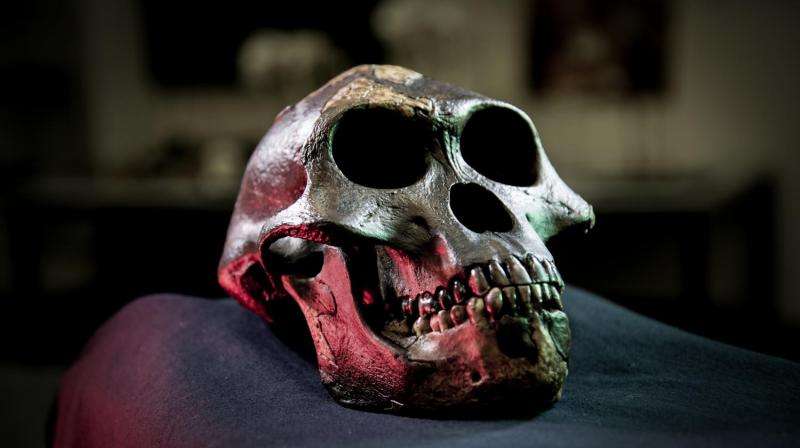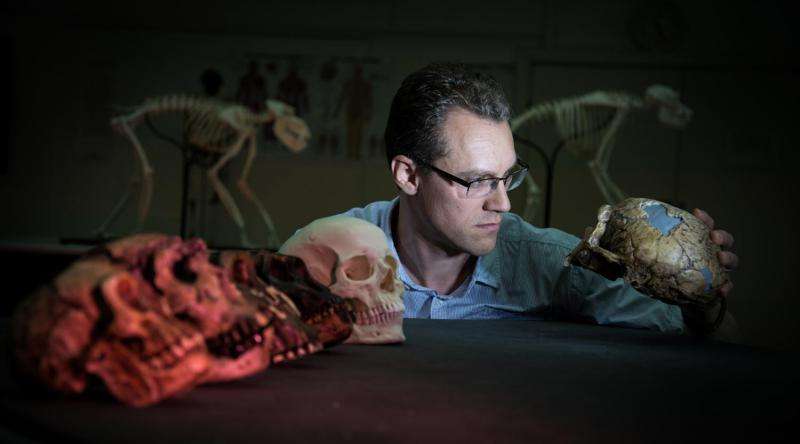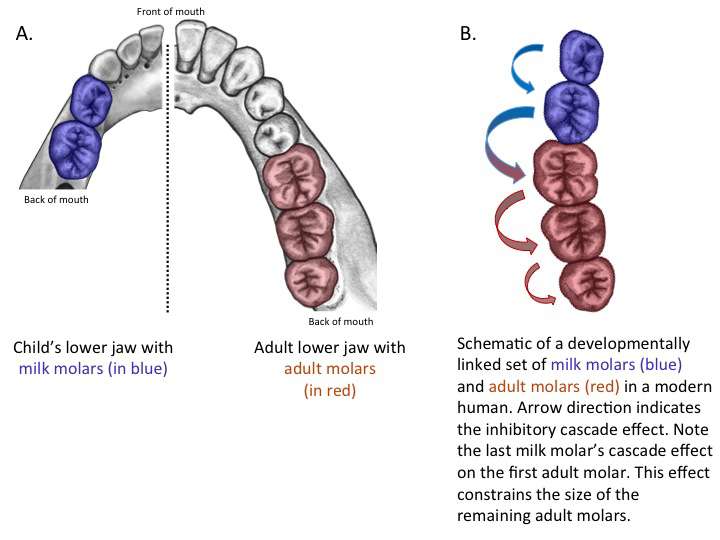Predicting human evolution: Teeth tell the story

Monash University-led research has shown that the evolution of human teeth is much simpler than previously thought, and that we can predict the sizes of teeth missing from human fossils and those of our extinct close relatives (hominins).
A new study published today in the journal Nature, led by evolutionary biologist Dr Alistair Evans from Monash University, took a fresh look at the teeth of humans and fossil hominins. The research confirms that molars, including wisdom teeth, do follow the sizes predicted by what is called 'the inhibitory cascade' - a rule that shows how the size of one tooth affects the size of the tooth next to it. This is important because it indicates that human evolution was a lot simpler than scientists had previously thought.
Dr Alistair Evans explains how our fascination with where we come from, and what our fossil ancestors were like, has fuelled our search for new fossils and how we can interpret them.
"Teeth can tell us a lot about the lives of our ancestors, and how they evolved over the last seven million years. What makes modern humans different from our fossil relatives? Palaeontologists have worked for decades to interpret these fossils, and looked for new ways to extract more information from teeth," Dr Evans said.
Dr Evans, a research associate at Museum Victoria, discussed how this new research has challenged the accepted view that there was a lot of variation in how teeth evolved in our closest relatives.
"Our new study shows that the pattern is a lot simpler than we first thought - human evolution was much more limited," Dr Evans said.
Dr Evans led an international team of anthropologists and developmental biologists from Finland, USA, UK and Germany, using a new extensive database on fossil hominins and modern humans collected over several decades, as well as high resolution 3D imaging to see inside the fossil teeth.
The team then took the research a step further by applying the findings to two main groups of hominins: the species in the genus Homo (like us and Neanderthals), and australopiths, including specimens like Lucy, the famous fossil hominin from Africa.
Dr Evans explained that while it was discovered that both groups follow the inhibitory cascade, they do so slightly differently.

"There seems to be a key difference between the two groups of hominins - perhaps one of the things that defines our genus, Homo," Dr Evans said.
"What's really exciting is that we can then use this inhibitory cascade rule to help us predict the size of missing fossil teeth. Sometimes we find only a few teeth in a fossil. With our new insight, we can reliably estimate how big the missing teeth were. The early hominin Ardipithecus is a good example - the second milk molar has never been found, but we can now predict how big it was."
Another author on the Nature paper was Professor Grant Townsend from the University of Adelaide's School of Dentistry. The study examined teeth of modern humans, including those in one of the world's largest collections of dental casts housed at the Adelaide Dental Hospital.

"These collections of dental casts are critical to finding our place in the hominin evolutionary tree, and advancing knowledge in the oral health of Australians," said Professor Townsend.
The findings of the study will be very useful in interpreting new hominin fossil finds, and looking at what the real drivers of human evolution were. As well as shedding new light on our evolutionary past, this simple rule provides clues about how we may evolve into the future.
More information: "A simple rule governs the evolution and development of hominin tooth size," Nature, nature.com/articles/doi:10.1038/nature16972
Journal information: Nature
Provided by Monash University




















